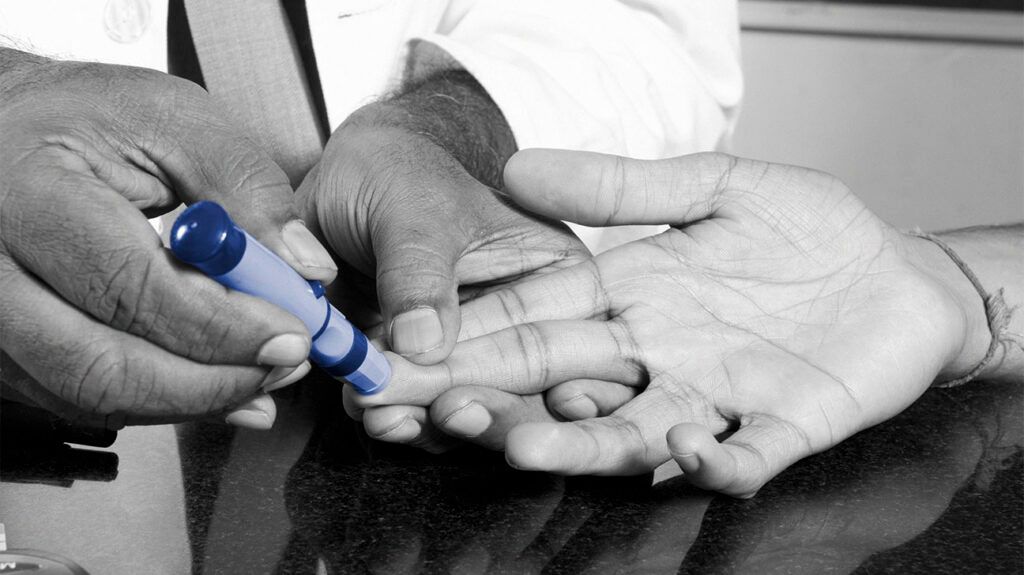The results of a cholesterol test show people the amounts of different types of cholesterol in their blood. This can indicate a person’s risk of heart disease and stroke, among other things.
Cholesterol is a type of fat the body uses to build cells and create hormones. However, if a person has too much of cholesterol, it can build up in the arteries, leading to various health problems.
A lipid panel test measures the amount of cholesterol in a person’s bloodstream. It provides measurements of total cholesterol, high-density lipoprotein (HDL) cholesterol, and low-density lipoprotein (LDL) cholesterol.
This article looks at what cholesterol results mean and the normal ranges for different types of cholesterol. It also discusses what to do if a person’s LDL level is too high.

Cholesterol results can show a person’s risk of cardiovascular problems, such as heart disease and stroke.
According to the Centers for Disease Control and Prevention (CDC), having high levels of LDL cholesterol, also known as “bad” cholesterol, can
When a person’s cholesterol levels are high, fatty deposits can build up in the arteries. These deposits can lead to the arteries narrowing and hardening, which can reduce or prevent enough blood from getting to the heart.
High cholesterol levels are just one risk factor that contributes to a person’s overall risk for cardiovascular problems. Other risk factors include:
Learn more about cardiovascular disease and its risk factors.
In the United States, healthcare professionals measure cholesterol in milligrams of cholesterol per deciliter of blood, or mg/dL.
This unit of measurement is the same for triglycerides, another form of fat in the blood that a lipid panel can detect.
Elsewhere in the world, healthcare professionals might measure cholesterol in millimoles per liter, or mmol/L.
Healthy ranges of HDL, LDL, and total cholesterol differ depending on a person’s sex and age. HDL is known as “good” cholesterol, and LDL is known as “bad.” Total cholesterol is the total amount of cholesterol in a person’s blood.
| Population | Healthy cholesterol levels |
|---|---|
| anyone ages 19 and below | • LDL: less than 100 mg/dL • HDL: more than 45 mg/dL • Total cholesterol: less than 170 mg/dL |
| females ages 20 years and above | • LDL: less than 100 mg/dL • HDL: 50 mg/dL or higher • Total cholesterol: 125–200 mg/dL |
| males ages 20 years and above | • LDL: less than 100 mg/dL • HDL: 40 mg/dL or higher • Total cholesterol: 125–200 mg/dL |
What is considered high cholesterol?
When people refer to having high cholesterol, they are typically referring to a person’s LDL cholesterol level.
For adults, an LDL level of 160–189 mg/dL is high, with doctors considering anything above that to be very high.
If a person has a cholesterol test in a medical setting, the healthcare professional will send the test to a laboratory for analysis. The healthcare professional will then explain the results once they are back.
There are also at-home tests available that users send off to laboratories for processing.
Other kits require the user to place a drop of blood on a test strip. Depending on the test, they may then insert the strip into an electronic meter to measure the fat levels in the blood. Alternatively, the user may need to consult a color chart to determine their levels.
Each testing kit will come with instructions for how to read the results.
Learn more about cholesterol testing at home.
If someone has a high LDL result, it is best to talk with a doctor. A doctor can suggest how to manage high cholesterol levels and assess the person’s risk of cardiovascular issues.
Medication can help with high LDL cholesterol levels, as can routine adjustments. Lifestyle measures that can help lower a high LDL level include:
- eating a heart-healthy diet
- reaching and maintaining a moderate weight
- exercising regularly
- getting good quality sleep
- stopping or avoiding smoking (if applicable)
According to the American Heart Association, everyone ages 20 years and above should check their cholesterol levels
If someone has cardiovascular disease or a high risk of developing it, their doctor may want them to check their levels more frequently.
When people reach the age of 40, their doctor will further assess their risk of developing heart disease or stroke.
Cholesterol test results can help indicate whether a person is at risk of developing cardiovascular health problems, such as heart disease.
Having a high level of LDL can raise a person’s risk. In general, doctors consider an LDL level above 160 mg/dL to be high.
If someone has a high LDL level, they may speak with a doctor about managing their cholesterol levels. In addition to medication, people can make certain lifestyle adjustments to help reduce high LDL levels.
